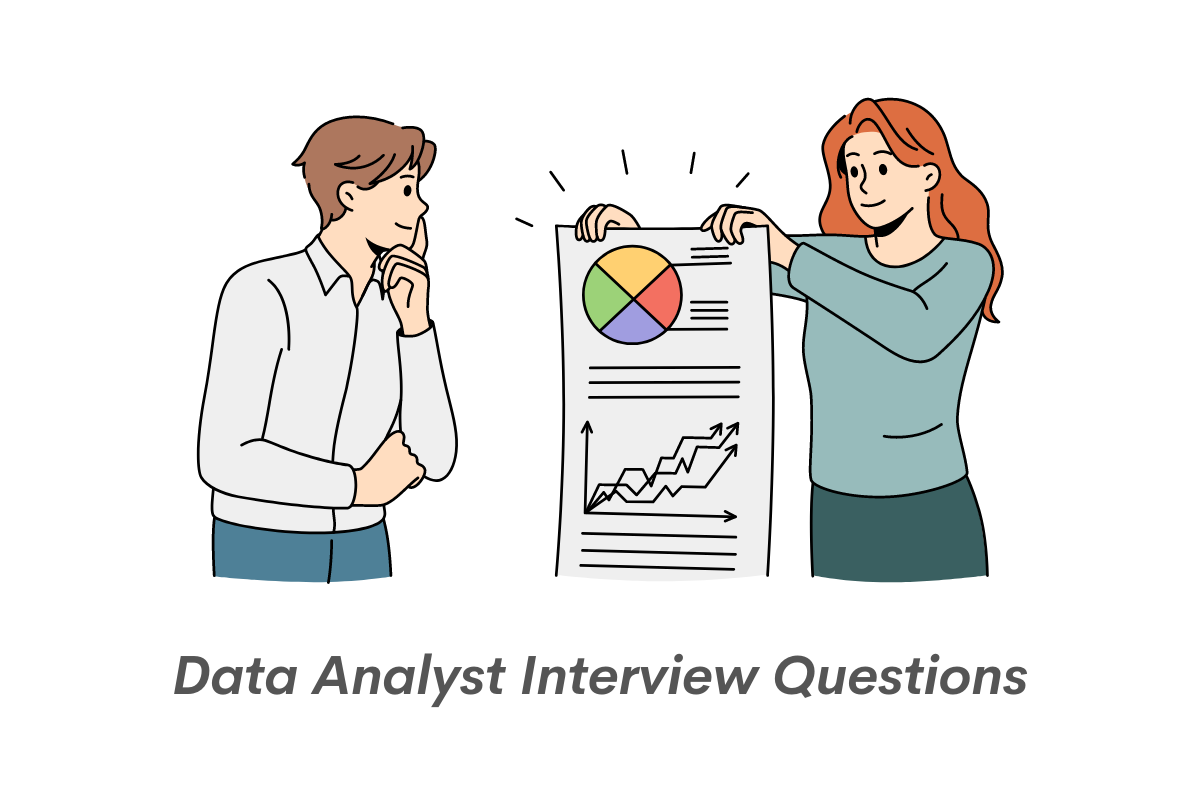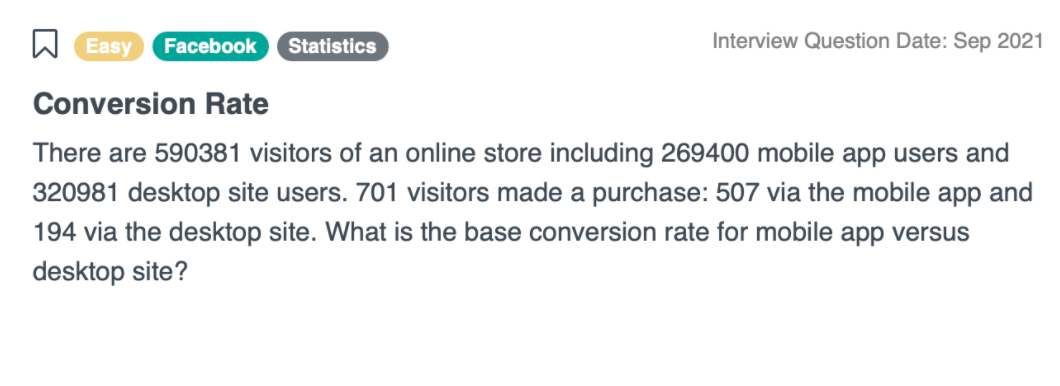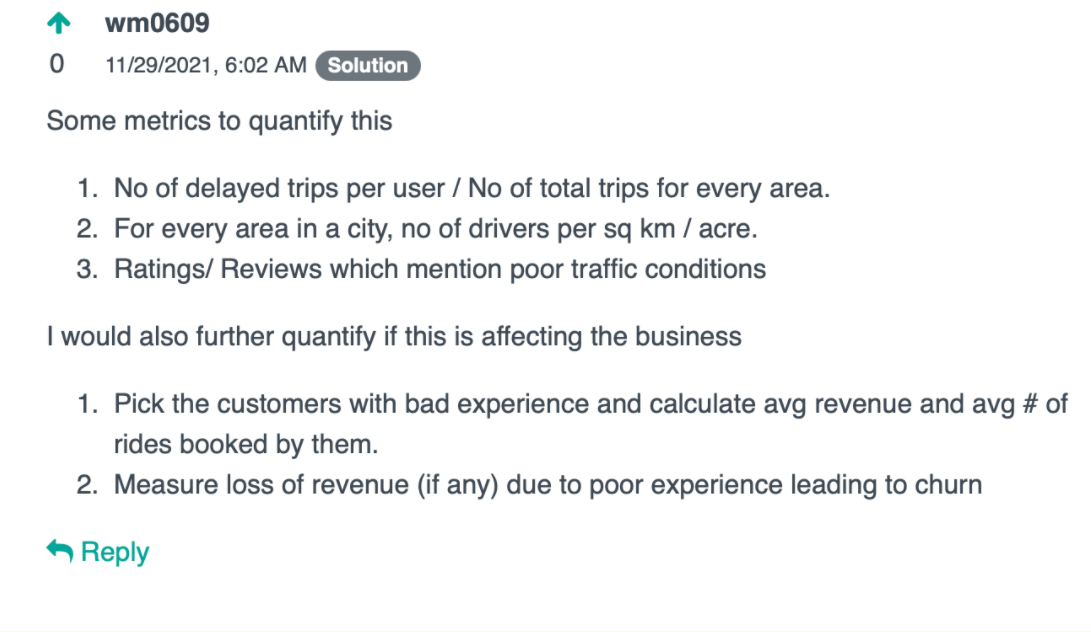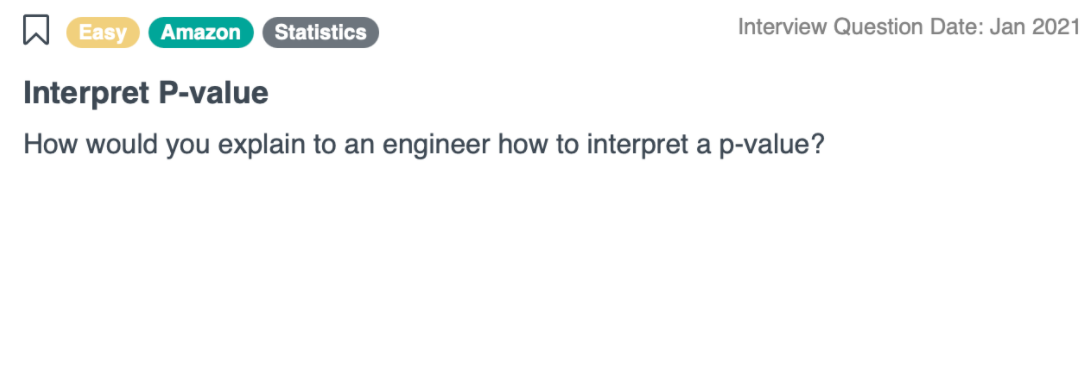Data Analyst Interview Questions

Categories:
 Written by:
Written by:Nathan Rosidi
In this article, we will discuss top interview questions and popular concepts from recent data analyst interviews at top companies.
For those looking to become data analysts, the interview process can be daunting. Interviews cover a broad range of content including technical interview questions, statistics and probability, and practical problem solving. Though data analyst interviews across companies vary, SQL skills are in demand and are frequently tested. A strong grasp of SQL will position you well as a candidate for data analyst positions. StrataScratch offers hundreds of interview questions and an active community of users to help you prepare for your data analyst interviews.
Let’s discuss top data analyst interview questions and popular concepts from recent data analyst interviews at top companies.
Data Analyst Technical Interview Coding Questions
During the data analyst interview process, you’ll more than likely encounter technical interviews where you will be expected to answer questions in SQL or Python. It is crucial to prepare for your interviews by practicing similar questions in advance. Today, we will reference StrataScratch’s robust backlog of interview questions from leading tech companies.
In a recent DoorDash interview, candidates were asked to find the title (or titles) of workers that earn the highest salary in a dataset using SQL.
Last Updated: July 2021
Find the job titles of the employees with the highest salary. If multiple employees have the same highest salary, include the job titles for all such employees.
Link to the question: https://platform.stratascratch.com/coding/10353-workers-with-the-highest-salaries
The data contains two tables - one titled ‘worker’ which contains data about the company’s employee, and another table called ‘title’ that consists of data on the worker’s title and the date that the role went into effect.
Before we look at a possible solution for this data analyst interview question, let’s think about our problem and how to solve it logically. This is a helpful technique when approaching coding problems generally, and especially interviews when you may be nervous. Take a moment to think about what exactly you are being asked, and mock-up the steps necessary to come to the correct solution.
In this data analyst interview question, we are interested in finding the position(s) with the highest salary and have two tables at our disposal. While the ‘worker’ table is fairly comprehensive, it’s missing our relevant ‘worker_title’ attribute that is present in the ‘title’ table. As a result, we need to join the tables. This can be achieved by matching on common values - in this case, ‘worker_id’ and ‘worker_ref_id’. After the tables are successfully joined, we are interested in the title(s) with the highest salary.
Another trick is to identify the relevant attributes and to ignore the others. For our question, we’re interested in ‘worker_id’, ‘salary’, ‘worker_ref_id’, ‘worker_title’. The other attributes are unnecessary complications that we can ignore.
Next, let’s go through a possible solution. Keep in mind that there are many ways to solve this problem, and many are available in the StrataScratch ‘Solution Discussions’ and ‘Solution from Users’ tabs.
SELECT title.worker_title
FROM worker
INNER JOIN title
ON title.worker_ref_id = worker.worker_id
WHERE worker.salary = (SELECT MAX(salary) FROM worker)We join the two tables on the ‘worker_ref_id’ field from the ‘title’ table, and ‘worker_id’ from the ‘worker’ table. The INNER JOIN will only contain rows from the tables when matching ID records are found in both tables. For example, this could exclude ‘worker_id’ records from the ‘worker’ table which don’t have a matching counterpart in the ‘title’ table’s ‘worker_ref_id’ field. In our use case, this is fine as we’re only interested in worker records which have a ‘worker_title’, so we need the id fields from both tables to match.
In the final line of the query, we take advantage of SQL’s aggregate function ‘MAX’ in order to identify the highest value in the ‘salary’ field from the ‘worker’ table.
Now that we understand the join and aggregate function used, we can easily read the query from beginning-to-end
We SELECT the ‘worker_title’ field from our ‘title’ table as we are interested in the title with the highest salary FROM our ‘worker’ table. We JOIN our ‘worker’ and ‘title’ tables ON our common values - ‘worker_ref_id’ and ‘worker_id’. Our JOIN occurs WHERE the ‘worker’ table’s ‘salary’ value is at its MAX.
The query results in two returned titles - Manager and Assistant Manager.
Also, check out our recent post on SQL JOIN interview questions to find more such questions to practice.
Data Analyst Non-Coding Interview Questions
Data analyst interviews often contain a series of non-coding questions which may test candidates’ ability to solve problems using statistics or business intelligence tools. In a recent Facebook Interview, candidates were asked to calculate the base conversion rates of respective mobile and desktop applications.
Conversion Rate
The question specified that there are 590,381 visitors of an online store including 269,400 mobile app users and 320,981 desktop site users. 701 visitors made purchases - 507 from the mobile app and 194 through the desktop. What are the base conversion rates of the mobile and desktop apps?

Link to the question: https://platform.stratascratch.com/technical/2320-conversion-rate
In order to answer this data analyst interview question, we must calculate each conversion rate. For the mobile application, 507 purchases were made over 269,400 users. This corresponds to a conversion rate (positive/total) of 507/269,400, or .188% for the mobile application. For the desktop application, there were 194 purchases from 320,981 desktop users. The conversion rate for desktop users is equal to 194/320,981, or .060%.
These results can be interpreted to say the mobile application has a much higher conversion rate than the desktop version. Are there characteristic differences between the versions that may be accounting for some amount of this variance? Are there compositional differences between the user bases of the two platforms? These are questions that as analysts we may seek to provide insights on.
Driving Conditions and Congestion
In an Uber data analyst interview, candidates were asked to estimate the impact that Uber has on driving conditions and congestion. The interviewer is asking this question to get an idea of how the candidate solves problems, and this data analyst interview question is very open-ended.

Link to this data analyst interview question: https://platform.stratascratch.com/technical/2213-driving-conditions-and-congestion
While there are many ways to approach this question, a member of the StrataScratch community suggested generating a handful of metrics to track performance. First, a ratio of the number of delayed trips divided by the total number of trips for each geographic region. This calculation gives us an idea of the percentage of trips which are delayed. Next, they suggested a metric which measures the number of drivers per square kilometer or acre. A metric like this would calculate user density, and could be used to determine how much an impact Uber has in that particular locale. A larger share of drivers would indicate a higher degree of product penetrance. For the third metric, analysis of reviews for the mention of poor traffic conditions may indicate that Uber drivers feel that the routes are slow, or that traffic broadly has increased.

Interpret P-Value
In a recent Amazon interview, data analysts were asked a quintessential probability question - how would you interpret a p-value to an engineer?

Link to the question: https://platform.stratascratch.com/technical/2166-interpret-p-value
This type of data analyst interview questions are very popular, as they test candidates’ ability to explain technical concepts in common language. A member of the StrataScratch community answered this question below.

Common Behavioral Data Analyst Interview Questions

Lastly, we will highlight a few common behavioral data analyst interview questions. These questions are more about your experience and problem solving skills, but are important to answer well. Taking a moment to think through your answers before you are asked the questions can improve your performance in interviews.
Describe a scenario in which you used data to solve a business problem.
Interviewers often want to understand your level of experience using data to solve problems. If you’re an experienced data analyst, begin with your most impactful projects. Did you analyze historical data to find a trend in customer data that was used to develop a successful new marketing strategy? Use that. Spend time building a narrative around your major projects. Be able to explain the business need, the details of your project, and how the results were used. A compelling description of your best analytical contributions can position you well against other candidates. If you don’t have practical experience as a data analyst, build a repository of projects that you can point your interviewers to. Examples using data similar to your intended employer is ideal, but any projects using data in a useful way are helpful.
Tell me about a time when you explained a technical concept to a non-technical audience.
The ability to convert analytical findings to practical application is among the most important skills in data analytics. Analysts often need to explain their work to business leaders who may not be technical experts. Interviewers are interested in their candidates’ experience bridging the gap between technical concepts and non-technical stakeholders.
The key to successfully answering this data analyst interview question is to focus on the practical application of the analysis. Business leaders don’t need to be masters of every aspect of a statistical model or to benefit. However, they need to understand the fundamentals of the project and to trust the findings. The ability to explain your projects in a coherent narrative without using jargon are helpful when answering this question. For those hoping to enter the field of analytics, this question can be more difficult. In that case, use an example from your personal life or previous work experience in another industry. The most important part here is communication.
What questions do you have?
In the majority of data analyst interviews, you’ll be asked if you have any questions regarding the role or company. Having a few questions about the position helps to establish your interest in the position, so be sure to have a few prepared. If you think of questions throughout the interview, ask those as is appropriate. However, make sure that your questions are genuine. A few safe inquisitions that you can make (in the event that you can’t think of others):
- What is a day in the life of a data analyst like at your company?
- What sort of projects does your analytics team work on?
Check out our post "Data Analyst Interview Questions" where we have discussed top questions and required skills from recent interviews at top companies.
Conclusion
In conclusion, preparation is critical to performing well in data analyst interviews. Making an effort to practice common interview skills including SQL problems, Probability and Statistics Interview Questions, and General Behavioral Questions. StrataScratch offers a robust catalog of data analyst interview questions and an active community of users. Interacting with other data professionals on actual interview problems with StrataScratch will help prepare you for your next data analyst interview.
Share


